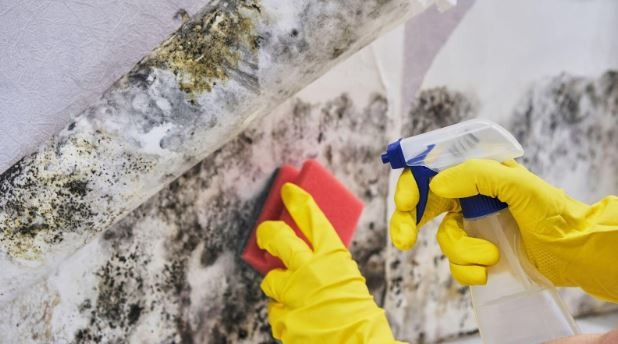Mould and mildew are two types of common fungi that no homeowner wants to discover inside their home. These little unwelcome microorganisms can spread easily, affecting large areas of your property. Not only do mould and mildew pose visual and structural problems, they can also create potentially serious health problems.
There are some similarities between mould and mildew since they both begin as tiny spores (seeds) that require a similar set of conditions to grow and spread, which makes them easy to confuse. But thankfully there are ways to tell them apart. But it’s important to bear in mind, if you believe your home may have mould or mildew issues, it’s best to contact a professional hazardous material consultant to investigate and help you remedy any findings.
Both mould and mildew have significant differences in appearance, health effects and severity that are important to understand, in this article we’ll go through the differences, effects and causes of both.
Differences between mold and mildew
Mildew and mould are both fungi and can spread easily. But mildew is not as invasive or as troublesome as mould. Mildew is classified as a surface fungus that can easily be treated, while mould on the other hand is often a part of a larger infestation and will require professional intervention and treatment. Rather than just growing on the surface like mildew, mould actually penetrates the object it’s living on and eats away at its cellular structure.
Mildew is usually a grey, white or a light brown colour and rests on top of the surface in a moist area. It has a powdery appearance and can be accompanied by a foul smell. Mould is usually black or green with a fuzzy appearance and very distinct musty smell.
In terms of health effects, mildew can cause minor respiratory problems like coughing fits but it is still less of a serious threat than mould. A serious mould infestation can cause a plethora of issues that range in seriousness depending on the health of the person it comes in contact with.
The health effects of exposure to mould can include a blocked or runny nose, irritation of the eyes and skin and even wheezing. Mould can affect people with asthma even more severely since inhaling mould spores can trigger an asthma attack. In rare cases, some individuals can develop a mould infection or a lung infection.
What causes mold and mildew?
As previously stated, mould and mildew begin growing in similar conditions. Both fungi need porous, organic material to grow (think of things like wood, insulation, carpet, food, upholstery,etc.) and humid conditions where there is not a lot of light or light sources are poor or non-existent. Their growth occurs when their spores find their way into ares that’s suitable for colonies.
These spores exist relatively harmless in our daily lives, they are in every breath we take. But the danger occurs when they find their way inside and encount the perfect trifecta of moisture, heat and darkness which encourages them to attach and multiply.
Effects of mold and mildew
Now mould and mildew spores can’t usually be seen by the naked eye until they have multiplied into a colony with millions of spores. In smaller colonies, neither mildew or mold are a serious problem and can be quickly remedied. Mildew is the least threatening of the two fungi because it can only grow on surfaces that can be easily cleaned with some household products. If left untreated, it can cause minor respiratory issues.
Mould is a completely different story though, not only does it have an unattractive look that is slimy and unsightly, it can cause serious structural damage. Mould is actually a predecessor to wood rot, so if your hardwood floor becomes mouldy they can warp and buckle. If mould is trapped underneath flooring, mould can spread further into the house and ruin other items like furniture, carpet, clothing and other areas if the foundation is exposed.
Homes with serious infestations may require the replacement of walls or entire roofs. Mold growing in the basement often goes unnoticed for months or years and can spread up into other rooms.
Some homes who have serious infestations may require replacement of walls or in worst case scenarios entire roofs. Toxic black mould can cause serious health implications and reactions since this particular type of mould secretes chemicals known as mycotoxins. This compound is toxic to humans or animals when ingested and can range in severity from acute poisoning to long-term effects like immune deficiency and cancer.

